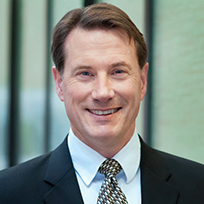Hot Money Credits to Kick-Start a Stalled Economy?

The COVID-19 pandemic has taken a terrible toll on Americans, both in terms of lost lives and disrupted livelihoods. Thankfully, there is hope that the crisis is now waning. As a result, most state and local governments are lifting their restrictions on economic activity, and there are signs of economic recovery.
However, there is still considerable uncertainty over just how rapidly the economy will recover or even whether it will recover at all. With the April unemployment rate hovering near 15%, the outlook is not entirely clear.
When the future is uncertain—as it almost always is—policymakers need to formulate contingency plans. In this post, I describe a contingency plan designed to avoid the possibility of an economic depression occurring due to self-fulfilling prophecy. Even if such an event is not likely, it is wise to be prepared just in case.
An Optimistic Scenario
Before describing worst-case outcomes and the policy prescription to guard against them, let me first outline the case for a relatively rapidly recovery. First, unlike most recessions, the nature of the shock is relatively well understood and is known to be temporary (notwithstanding concerns over a potential second wave).
Second, unlike typical recessions, economic activity was curtailed to achieve a clear social purpose: an investment in public health. Because this was broadly understood, it permitted a relatively large and rapid response from the federal government in terms of income-maintenance and credit-support policies.
Third, over 90% of recently unemployed workers reported themselves as being temporarily laid off. The last time a significant fraction of unemployed workers were on temporary layoff was during the 1981-82 recession. This was also the last time the U.S. economy experienced a V-shaped recovery.
A Pessimistic Scenario
Unfortunately, there are also forces in play that may result in a slower-than-hoped-for recovery. These forces can be broadly classified as fundamental or psychological factors.
Fundamental Factors in Economic Recovery
In terms of fundamental factors, consider that people are likely return to their pre-pandemic habits in a cautious manner. The return to normalcy will likely proceed slowly at first, then more rapidly as evidence on the safety of social interaction accumulates and disseminates.Ironically, this pattern resembles a contagion dynamic.
Also, the pandemic may have caused permanent damage, for example, in the form of business closures. Rebuilding broken relationships and lost enterprise will naturally take some time, and there are policies that may be employed to facilitate this type of healing process.
Psychological Factors in Economic Recovery
The outcome I want to focus on, however, is one in which a persistently depressed economy emerges as the byproduct of psychological factors. Suppose, for example, that many households and businesses remain pessimistic about future economic conditions. A natural way to hedge against bleak or uncertain prospects is to increase saving—that is, to reduce spending.
But since one person’s spending is another person’s income, the result must be a decline in future income—an outcome consistent with the pessimistic view that generated it. The resulting “coordination failure” has the flavor of a self-fulfilling prophecy. There is no obvious self-correcting mechanism to rely on here. The escape from a depressed state may occur by some luck, or perhaps through the coordinated actions of large private and public institutions.
An Insurance Policy: Hot Money Credits
Suppose the economy shows signs of stalling in the next quarter for no apparent (or fundamental) reason. If the issue is a problem of coordinating spending and hiring decisions (again, it is easy to imagine how one won’t happen without the other), then it’s not obvious how to make this coordination happen.
Government purchases of goods and services may be one way to accomplish this, though it’s not clear what exactly the government should purchase. Cash transfers made directly to households and small businesses may be preferable, because we can trust individuals to direct their spending on the goods and services they value most.
However, if the general outlook remains bleak, cash transfers are more likely to be saved rather than spent. And if the idea is to incentivize a coordinated private sector spending effort, this may not be the best way to do it. This is where the idea of a hot money credit (HMC) program comes in. An HMC program is like a regular cash transfer program, except that the money deposited in your account (or stored-value card) comes with an expiration date. As with many gift cards, the recipient must either “use it, or lose it.” The technology to program money with an expiry date is already available and, indeed, the policy is presently used in the Supplemental Nutrition Assistance Program (SNAP), where unused credits expire after 365 days.
Unlike SNAP money, individuals would be permitted to spend their HMCs on a wide variety of goods and services. What makes an HMC “hot” is its short expiry date. Consider, for example, a (non-cashable) $1,000 deposit that would be removed from the recipient’s account if it is not spent by the end of 30 days. This type of money generates what economists call a “hot potato effect.”
There is the question of what happens to an HMC once it is spent (that is, transferred from the recipient’s bank account to a merchant’s bank account). There are a number of possibilities. One option is to reset the expiry date every time the money is spent. Hot money can be turned into regular money at any time by setting an infinite expiry date. Another option is to convert the money that lands in a merchant’s bank account into a tax credit.
Ideally, the HMC program would operate at the federal level. But it might conceivably be implemented at the state level as well, with state-issued HMCs made redeemable for state tax credits after they are spent at local establishments.
History of the Idea
The idea of an HMC is by no means new. Silvio Gesell proposed the idea in the 1890s, following up on a suggestion by Swiss merchant George Nordman who argued that a “carrying tax” on money might prevent hoarding.Champ, Bruce. “Stamp Scrip: Money People Paid to Use,” Federal Reserve Bank of Cleveland Economic Commentary, April 2008. The French politician Pierre-Joseph Proudhon is also credited with the idea, which he labeled monnaie fondante (melting money).Ferreira, Nathalie. “Crédit et monnaie sociale chez P.J. Proudhon (1809-1865),” Revue de Philosophie Économique, 2011, Vol. 12, pp. 91-116. I thank Cristian Frasser for alerting me to this reference.
Gesell’s work eventually attracted the attention of economists John Maynard Keynes and Irving Fisher. Keynes mentions Gesell’s proposal in his book The General Theory of Employment, Interest and Money, and Fisher wrote a short book on the proposal called Stamp Scrip.
In fact, Fisher lobbied Congress to institute stamp scrip as a way to provide relief for Americans in the Great Depression. U.S. senators introduced a bill that would have distributed a significant quantity of stamp scrip nationally, but it did not end up becoming law.
Summary
The HMC proposal is meant to address a specific problem. Its success will depend on the problem being diagnosed correctly. This is an admittedly difficult task, but one that is familiar to policymakers.
The specific problem in this case is “coordination failure”—a phenomenon that may conceivably arise in societies where economic organization is coordinated largely through a decentralized private sector, as Keynes discussed in General Theory.
The HMC proposal is closely related to negative interest rate policy (NIRP). In particular, one could think of an HMC as embedding a negative 100% interest rate on money held past its expiry date. The goal of both policies is to incent a coordinated private spending effort to kick-start a stalled economy. The resistance against NIRP stems in large part from the fact that it constitutes a tax on accumulated money balances which, for most people, represents a historical record of personal sacrifice.
An HMC policy is not subject to this shortcoming because the “threatened tax” applies only to newly created money distributed as a gift. In short, it is a way to restrict NIRP to newly created money only, thereby realizing the benefits of NIRP without incurring the political costs associated with the policy. As such, a well-designed HMC policy implemented through U.S. Treasury authority would eliminate the need for NIRP implemented through the Federal Reserve.
To conclude, even if the possibility of “coordination failure” seems remote, there is little excuse for not being prepared to act in the event it happens. Once program parameters and protocols are determined, policy action can be triggered by congressional vote, as opposed a set of economic conditions that trigger the use of other “automatic stabilizers.” This latter property should make the proposal more palatable for lawmakers concerned with maintaining control over government spending.
Notes and References
1 Ironically, this pattern resembles a contagion dynamic.
2 Champ, Bruce. “Stamp Scrip: Money People Paid to Use,” Federal Reserve Bank of Cleveland Economic Commentary, April 2008.
3 Ferreira, Nathalie. “Crédit et monnaie sociale chez P.J. Proudhon (1809-1865),” Revue de Philosophie Économique, 2011, Vol. 12, pp. 91-116. I thank Cristian Frasser for alerting me to this reference.
Additional Resources
Citation
David Andolfatto, ldquoHot Money Credits to Kick-Start a Stalled Economy?,rdquo St. Louis Fed On the Economy, May 29, 2020.
This blog offers commentary, analysis and data from our economists and experts. Views expressed are not necessarily those of the St. Louis Fed or Federal Reserve System.
Email Us
All other blog-related questions


